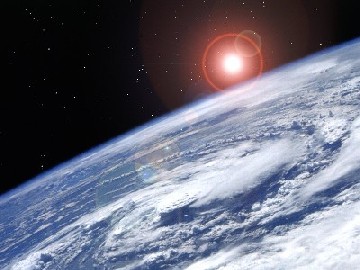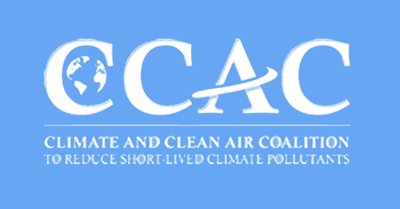Strong summer storms that pump water high into the upper atmosphere pose a threat to the protective ozone layer over the United States, researchers said on Thursday, adding that the risk of damage may increase as the climate warms.
In a study published online by the journal Science, Harvard University scientists reported that some storms send water vapor well into the stratosphere — which is normally drier than a desert — and showed how such events could rapidly set off ozone-destroying reactions with chemicals that remain in the atmosphere from CFCs, the now-banned refrigerant gases.
Ozone helps shield people, animals and crops from damaging ultraviolet rays from the sun. Much of the concern about the ozone layer has focused on Antarctica, where a seasonal hole, or thinning, has been seen for two decades, and the Arctic, where a hole was observed last year. But those regions have almost no population.
A thinning of the ozone layer over the United States during summers could mean an increase in ultraviolet exposure for millions of people and a rise in the incidence of skin cancer, the researchers said.
“This problem now is of deep concern to me,” said James G. Anderson, an atmospheric scientist and the lead author of the study. “I never would have suspected this.”
The findings were based on sound science, he and other experts said, but direct measurements of the impact of water vapor on ozone chemistry are lacking, and much more research is needed.
While there is conclusive evidence that strong storms have sent water vapor as high as 12 miles — through a process called convective injection — and while climate scientists say one effect of global warming is an increase in the intensity and frequency of storms, it is not yet clear if the number of such injection events will rise.
“Nobody understands why this convection can penetrate as deeply as it does,” said Dr. Anderson, who has studied the atmosphere for four decades.
“It’s the union between ozone loss and climate change that is really at the heart of this,” he said, adding that for years he and other scientists had always been careful to keep the two concepts separate. “Now, they’re intimately connected.”
Mario J. Molina, a co-recipient of a Nobel Prize for research in the 1970s that uncovered the link between CFCs and damage to the ozone ayer, said the study added “one more worry to the changes that society’s making to the chemical composition of the atmosphere.” Dr.
Molina, who was not involved in the work, said the concern was “significant ozone depletion at latitudes where there is a lot of population, in contrast to over the poles.”
The study, which was financed by the National Aeronautics and Space Administration, focused on the United States because that is where the
data was collected. But the researchers pointed out that similar conditions could exist at other midlatitude regions.
Ralph J. Cicerone, an atmospheric scientist and the president of the National Academy of Sciences, who reviewed the study for Science, also
called for more research. “One of the really solid parts of this paper is that they’ve taken the chemistry that we know from other atmospheric
experiments and lab experiments and put that in the picture,” he said. “The thing to do is do field work now — measure moisture amounts and whether there is any impact around it.”
“The connection with future climate is the most important issue,” Dr. Cicerone said.
Large thunderstorms of the type that occur from the Rockies to the East Coast and over the Atlantic Ocean produce updrafts, as warm moist air accelerates upward and condenses, releasing more heat. In most cases, the updrafts stop at a boundary layer between the lower atmosphere and the stratosphere called the tropopause, often producing flat-topped clouds that resemble anvils. But if there is enough energy in a storm, the updraft can continue on its own momentum, punching through the tropopause and entering the stratosphere, said Kerry Emanuel, an atmospheric scientist at the Massachusetts Institute of Technology.
When Dr. Anderson produced data about five years ago clearly showing these strong injections of water vapor, “I didn’t believe it at first,” Dr.
Emanuel said. “But we’ve come to see that the evidence is pretty strong that we do get them.” At the same time, he added, “we don’t really
understand what determines the potential for convection in the atmosphere,” so it is difficult to say what the effect of climate change will
be. “We’re much further along on understanding how hurricanes respond to climate change than normal storms,” Dr. Emanuel said.
CFCs, or chlorofluorocarbons, were banned in the mid-1980s by the international treaty called the Montreal Protocol, but it will take decades for them to be cleansed fully from the atmosphere. It is chlorine from the CFCs that ultimately destroys ozone, upsetting what is normally a
balanced system of ozone creation and decay. The chlorine has to undergo a chemical shift in the presence of sunlight that makes it more
reactive, and this shift is sensitive to temperature
Dr. Anderson and his colleagues found that a significant concentration of water vapor raises the air temperature enough in the immediate vicinity to allow the chemical shift, and the ozone-destroying process, to proceed rapidly.
“The rate of these reactions was shocking to us,” Dr. Anderson said. “It’s chemistry that was sitting there, waiting to be revealed.”
Dr. Anderson said that if climate change led to more events in which water was injected well into the stratosphere, the effect on ozone could not be halted. “Because it’s linked to the inexorable addition of CO2 and methane,” he said, “it’s irreversible.”
If CFCs had not been banned, the ozone layer would be in far worse shape than it is. But by showing that CFC-related ozone destruction can
occur in conditions other than the cold ones at the poles, the study suggests that the full recovery of the ozone layer may be further off than
previously considered.
“The world said, ‘Oh, we’ve controlled the source of CFCs; we can move on to something else,’ ” Dr. Anderson said. “But the destruction of ozone is far more sensitive to water vapor and temperature.”
____________________________________








